With the release of Oracle Integration 23.10, we are pleased to announce that we are adding support for common healthcare standards and protocols. The capabilities supported in this first release of OIC for Healthcare are outlined below. This is a “Limited Availability” (LA) release, and we are currently seeking customers who would like to participate in an early adopter program. We anticipate a “General Availability” (GA) release around the June 2024 timeframe.
If you would like to participate in the LA early adopter program and get access to these new features in your OIC 3 instance, please send an email to me with the subject “OIC Healthcare Early Adopter” and let me know your use-case/situation and how you plan to use OIC for Healthcare. Please email me here: “steve.tindall at oracle dot com“.
New Healthcare Integration Capabilities
With this release, we have added support for HL7 v2 in OIC. This support comes via the following new features:
- HL7 Schema and Message Editor: A new UI within OIC for customizing HL7 v2 message definitions.
- The Healthcare Action: A new “Healthcare” action in the developer palette specifically for converting and processing HL7 messages in your OIC flows.
- MLLP Adapter: A new bidirectional OIC Adapter for transport of HL7 messages over TCP using MLLP.
With these new features, we have effectively allowed HL7 documents to become first class citizens in an OIC flow. For the inbound use case, the healthcare action takes a raw HL7 message received over the wire (usually via TCP / MLLP) and converts it into a normal OIC payload ready for processing and mapping in your OIC flows. For the outbound use case, the healthcare action takes an OIC payload and converts it into a raw HL7-compliant message ready for delivery to an external system (usually an MLLP endpoint).
Over the coming weeks I will post several more blogs with demos of using the new features, and more detailed technical walkthroughs of each of the new components. For this blog, let’s take a look at an overview of each component and how they work.
FHIR APIs
In this first release of OIC for Healthcare, we have chosen to focus on support for HL7 messages as outlined above. FHIR is another very common and increasingly popular standard for healthcare interoperability. Because FHIR is a RESTful specification and is built upon the HTTP REST protocol, and FHIR requests and responses are transmitted in either JSON or XML format, OIC already fully supports FHIR APIs today via its existing REST adapter. Using the OIC REST adapter, you can build and host integration flows that publish a FHIR interface that can be invoked using REST. You can also invoke any remote FHIR APIs outbound from OIC using the REST adapter. Now with the addition of HL7 support, OIC is a very powerful healthcare integration solution for modernizing your health IT processes by providing easy mapping and conversion capabilities between HL7 and FHIR.
In a future release, we do plan to offer a dedicated FHIR adapter in OIC. This FHIR adapter will increase productivity for FHIR developers as well as introduce support for features such as FHIR profiles and validation. Keep an ear open for a future announcement about our intended dedicated FHIR adapter.
HL7 Schema and Message Editor
We have developed a brand new online HL7 schema editor that allows you to take any base HL7 v2 definition and customize it according to your needs. We ship all HL7 v2 definitions with OIC from HL7 v2.3.1 onwards. Creating a new customized schema is as simple as selecting the base definition and version you want to start with from our repository. You will be presented with that schema in the new editor ready for you to add new segments and fields or make changes to existing elements. You can set datatypes, cardinality, and names and descriptions for each field.
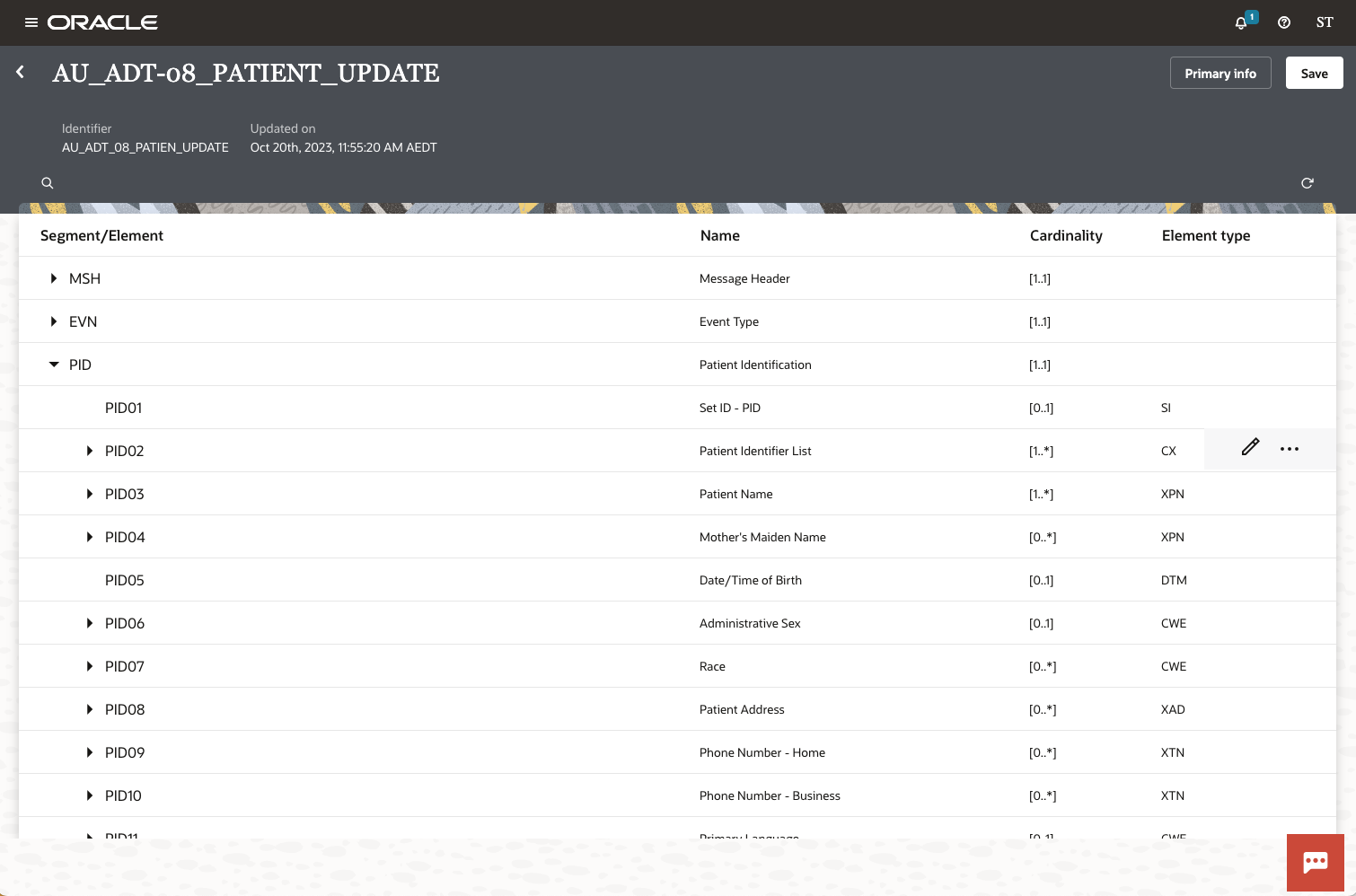
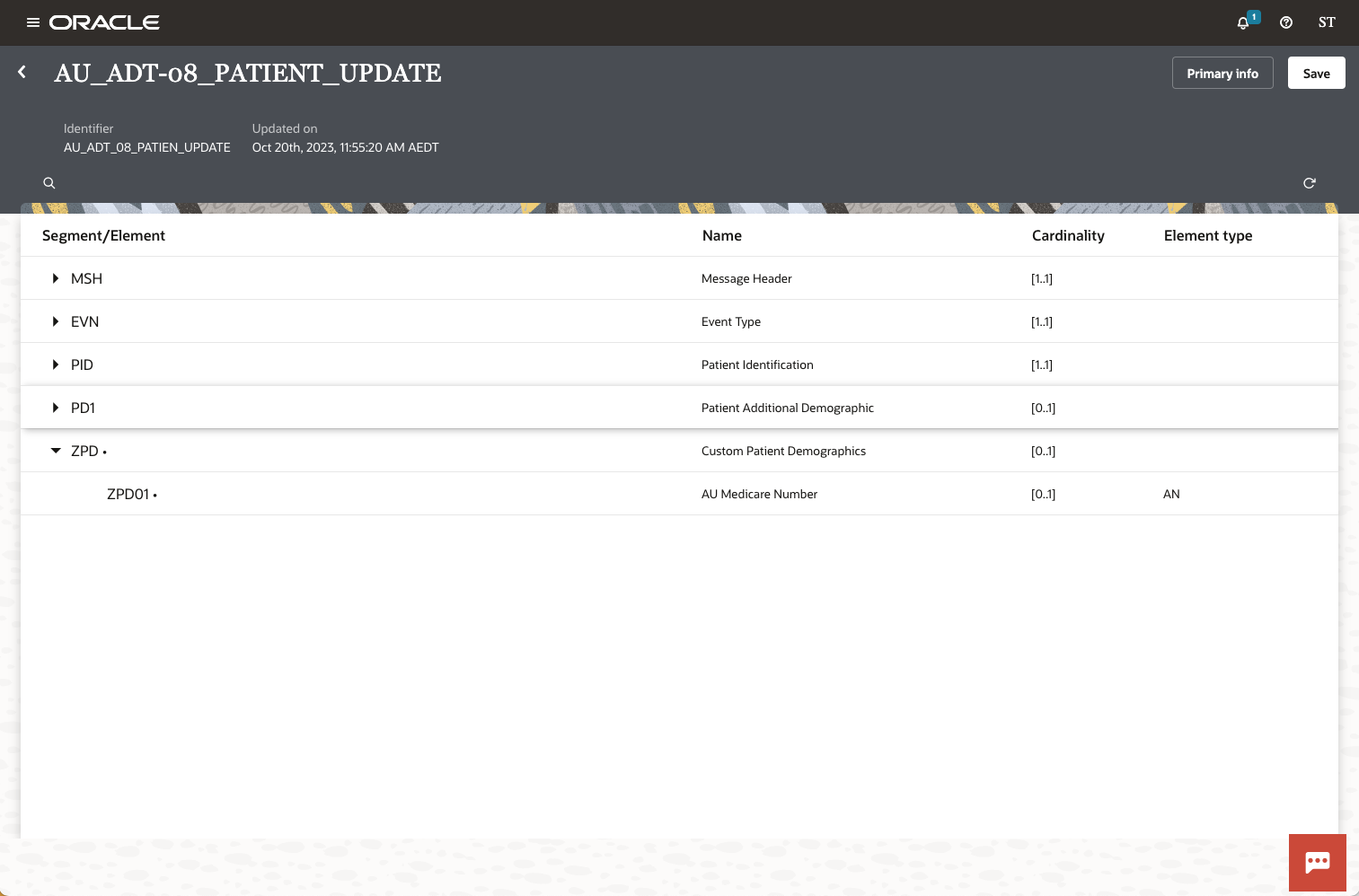
Healthcare Action
We have introduced a completely new developer action to the tool palette in the integration canvas that allows you to convert and process HL7 messages in your flows. The new action is a system adapter that transforms native HL7 messages into OIC runtime variables so that they are available in your flow for manipulation, mapping, looping over, etc. This action is the primary new feature that you will use to transform inbound HL7 messages coming into OIC and create native HL7 messages to be sent out of OIC.
The Healthcare action provides three new operations in this release:
- Match and translate inbound document
- Use this operation to identify the incoming message type and version. It returns a reference to a translated message as well as metadata needed to route the integration flow to an appropriate child integration to process the message. When you call the operation, you need to specify a list of HL7 definitions with which you want to match.
- Convert message reference to document
- This operation is typically used in the child integration flow that provides the business logic to process the message. This operation is used to convert the message into a mappable OIC variable. At this point, there will be a variable in your flow that is available in the mapper in the format of the received HL7 message.
- Translate to outbound message
- This operation is for the outbound use case in which you want to send an HL7 message from OIC. Once you have enriched or transformed your message and have it in the format required for the target system, you can call this operation and OIC will create a native, validated HL7 message (according to your schema definition). This is now ready to be sent to the external target system.
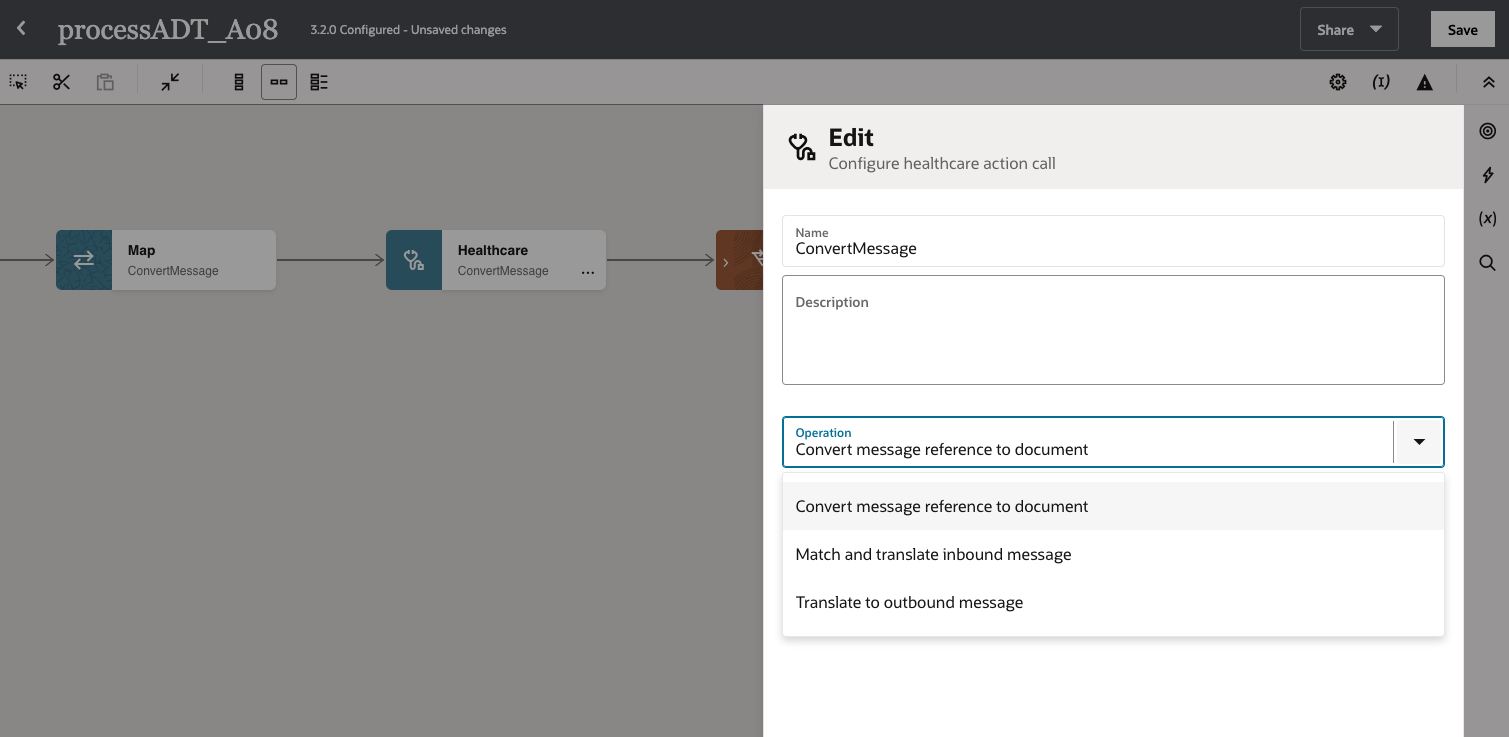
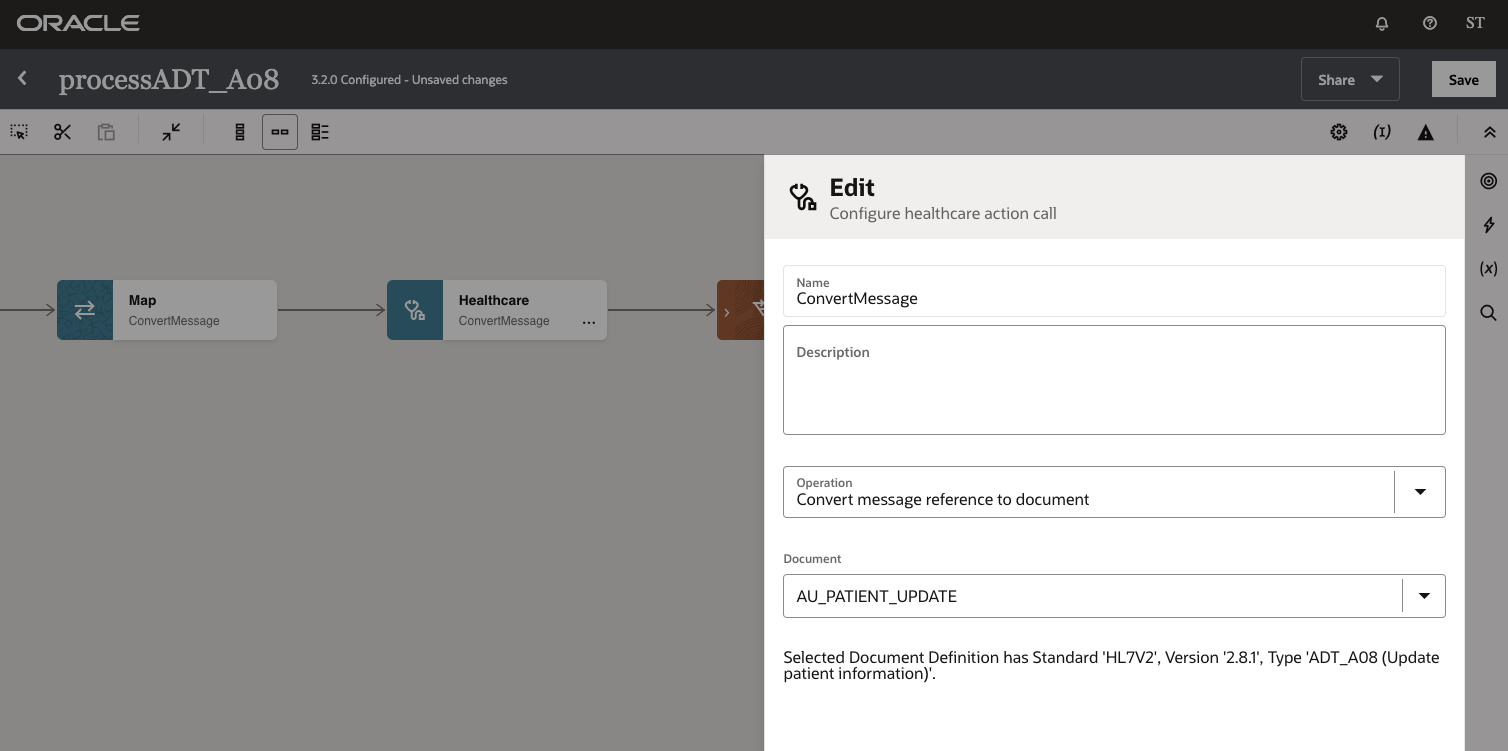
MLLP Adapter
The new MLLP adapter is a bidirectional OIC adapter that supports the transmission of HL7 messages over TCP using the MLLP protocol. The adapter can be used to trigger integrations (receive inbound HL7 messages) or to invoke an external MLLP endpoint to send an HL7 message outbound from OIC.
The image below shows an example of configuring the MLLP adapter to send outbound messages from OIC. When invoking the adapter with this connection, OIC will deliver the message to the target host and port using TCP / MLLP.
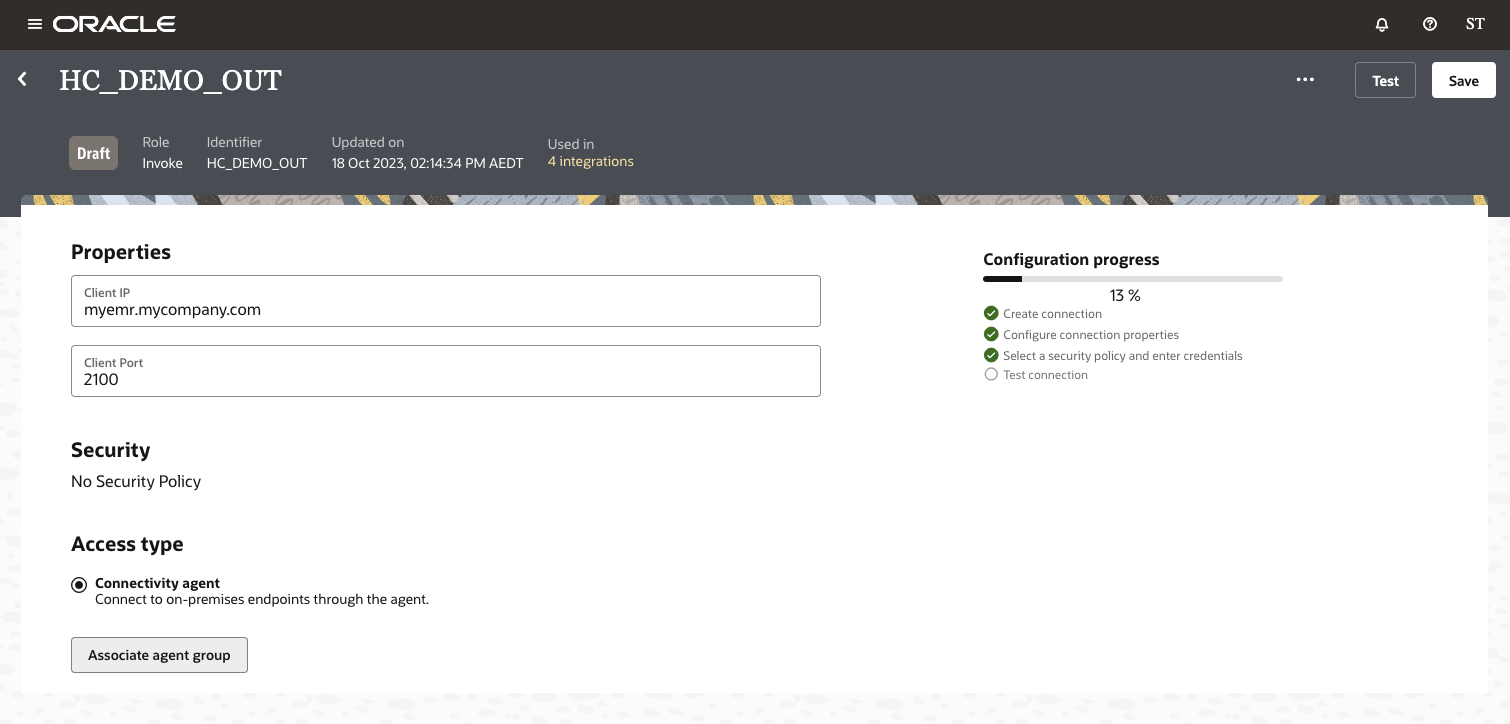
Roadmap
Follow the What’s New for Oracle Integration 3 page for information about new features in each new release. For Healthcare-specific features, the high-level 2024 plan is outlined as follows:
- HL7: Support for batched HL7 messages, FIFO message delivery (message order delivery guarantee), and others.
- FHIR: A dedicated FHIR adapter, profiles, and validation.
- Cerner Millennium application adapter: Prebuilt connectivity to Millennium providing preconfigured access to a large catalog of APIs in the Millennium application suite.
- CDA and DICOM support
